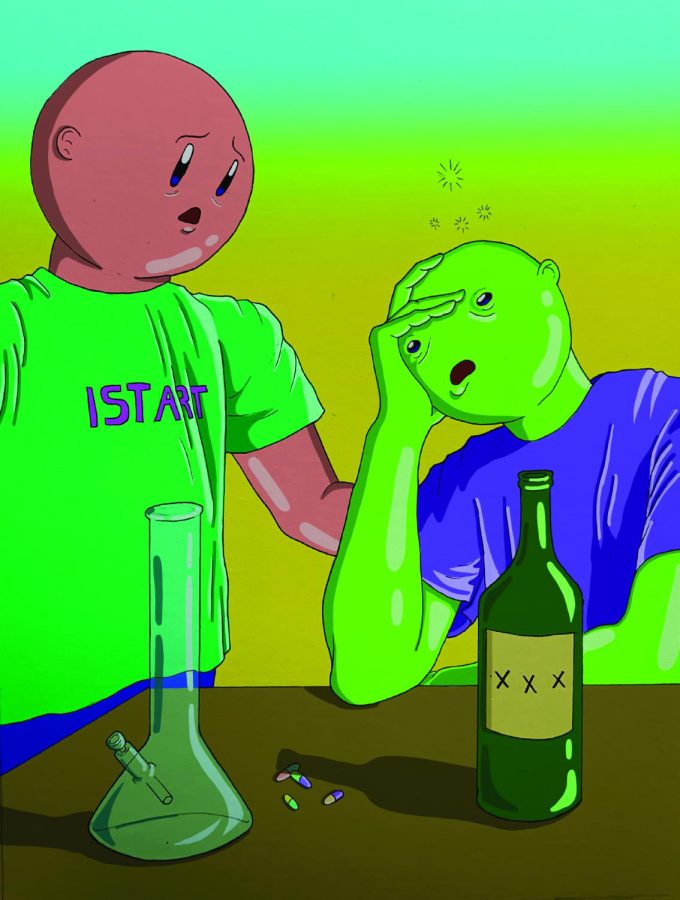A Country Facing Addiction
December 12, 2022
Substance use is an issue that can reach the deepest depths of any community in the world and can tear anyone apart with no regard for their background or demographics. But many resources are available to help people overcome the battle before it is too late.
“Substance abuse” is defined by Verywell Mind as “a pattern of harmful use of any substance for mood-altering purposes,” and is not limited to illegal drugs or even prescription ones.
The “2020 National Survey on Drug Use and Health” found that 59.3 million Americans aged 12 or older used some kind of illicit drug within a year of taking the survey. In 2019, this number was 57.2 million, according to the National Institute on Drug Abuse.
The 2020 survey also reported that 40.3 million Americans — about 14.5% of the U.S. population — have a “sub- stance abuse disorder.”
The Substance Abuse and Mental Health Services Administration re- ported that the COVID-19 pandemic is partially responsible for the increased rates of drug use in 2020, with many individuals stating that the outbreak affected their mental health.
With a variety of factors playing a role in people’s decisions to start using, it is almost impossible to find one way to tame this beast that works for everyone.
A good place to start is USA.gov, a federal government website that lists a variety of services. The organization lists help hotlines and locators for people anywhere in the country who are dealing with a variety of mental and physical health issues, including substance use, and are looking for treatment.
CSUN also has many resources available to those struggling with drug use, catered to what they are using. From websites to centers on campus, students can find the resources they need at their disposal regardless if they attend classes in person or online.
Located in Bayramian Hall, the University Counseling Services center provides mental health services to anyone who might need them. The center allows students to book appointments with counselors to talk about what they are going through, and has three “dedicated student peer education programs” that students
can join to learn about various mental health issues. They are Project DATE,
a rape prevention program; the BLUES Project, a suicide prevention program; and JADE, a program that educates people on eating disorders.
For those who would prefer to find treatment on their own or online,
the self-help library provides books, articles, websites for groups such as the Kelty Mental Health Resource Centre, and other resources students can use to get treatment.
CSUN also has a program called iSTART, which is funded by SAMHSA and is partnered with Tarzana Treat- ment Centers. The program lists many resources for substance use prevention and suggests activities that promote health and wellness.
The iSTART website provides resources from the National Institute on Alcohol Abuse and Alcoholism, as well as Verywell Mind, whose mission is “to help you prioritize your mental health and find balance amid the chaos of daily life.” These give students and other individuals advice for what they can say if they are trying to avoid using, such as, “I’m driving” and, “No thanks, I’ve tried it and I didn’t like it.”
The website also provides resources to combat the misuse of prescription and illicit drugs. These include the Generation Rx toolkit, an educational organization whose website is built to guide people of all ages through the dangers of prescription drug misuse, and the NIDA, which has resources that range from how to resist peer pressure to a list of commonly used drugs, why people use them, what their effects are and how to get treatment for them.
The issue of drug use is one that does not have a single solution. For this reason, it is necessary that resources like these exist for people to take advantage of as they look to overcome substance use problems in a way that works for them.
